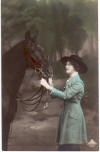
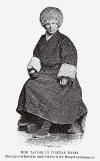
Unlike many people who struggle to know what their mission is in life, Annie Royle Taylor (1855-1922) decided at the age of thirteen that she was fated to become a Christian missionary and travel to foreign countries to share her spiritual beliefs. Despite her parent’s strong objections, the headstrong Annie converted to evangelical Christianity, studied medicine and got her start working in the slums of London. But her sights were set on distant countries.
She sailed to China in 1884 and immediately began her missionary duties. But having once described herself as a “lone wolf”, once again she was unsatisfied. In 1889 Annie first travelled to Darjeeling, India and then moved on to the small kingdom of Sikkim where she arranged for the priests in a Buddhist monastery to teach her Tibetan.
It was while she lived in Sikkim that she converted a young Tibetan named Pontso to Christianity. He agreed to accompany Annie on a daring horse ride to Lhasa, the forbidden capital of Tibet. Before they set out in September, 1892, Annie shaved her hair and donned Tibetan clothes in an attempt to disguise herself. Following the ancient “Tea Horse Trail,” which led from China to Lhasa, Annie and Pontso made their way across southwest Tibet.
Their progress was slowed when bandits stole some of their horses. As the weather became progressively worse more of their horses died from cold and lack of food. Finally, only three days away from Lhasa, Annie was detected by the Tibetan authorities and stopped. Despite being alone on the frozen Tibetan plain and surrounded by hostile Tibetans, Annie refused to surrender. When she realized the Tibetans would not compromise, she demanded that they provide her with horses and food for the return trip to China.
Annie and the faithful Pontso arrived in Kangding, China in April 1893, after which she returned to England where she became a minor celebrity.
Maria "Nelly" Ternan - England's first female foreign correspondent, rode into the mountains of Algeria in search of lions in 1881.
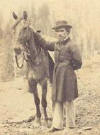
At the conclusion of the American Civil War in 1865, Confederate Colonel Alexander Watkins Terrell was faced with a difficult decision. If he remained in his native Texas he would find himself under the military rule of his former enemies. His other option was to saddle up and seek not only safety, but foreign aid for a possible extension of the southern cause. Terrell decided that Mexico, under the political rule of Emperor Maximilian, the French installed puppet ruler, was the place to find money, guns and shelter. Accompanied by his fellow Confederate officers, Colonels M. T. Johnson, George Flournoy and Peter Smith, the four Long Riders rode into exile. “We were all mounted on fine animals, “Terrell recounted in a rare account published just before his death in 1933. “Each of us rode one horse the entire distance. We stopped every thirty minutes, removed saddle and blankets, and permitted the horses to graze or rest for five minutes before remounting.” Though Terrill did meet Maximilian, the French emperor was soon captured and executed by Mexican partisans, thus destroying any dreams of resurrecting the American Confederacy. Yet Terrill’s amazing story served as the inspiration for at least two Hollywood films, “Vera Cruz” starring Gary Cooper and “The Undefeated” starring John Wayne. Both films depicted Confederate officers riding into Mexico in search of Maximilian’s help.
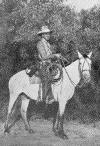
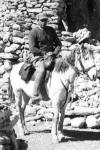
Count Ilia Tolstoy
- rode from India to China, via Tibet, thereby accomplishing a secret
diplomatic mission entrusted to him by the American president, Franklin
Delano Roosevelt. Like all political events, there were public and private
reasons behind this decision. By the spring of 1942 the war against Japan
and the Nazis looked grim. The Japanese had conquered the eastern portion of
the previously impregnable British Empire, starting with their capture of
the fortress of Singapore and concluding with their occupation of Burma.
With India threatened, and their allies in China surrounded by hostile
Japanese forces, Roosevelt and Churchill hatched the idea of using the
mountainous kingdom of Tibet as a transit station for supplies to be moved
overland from India to China.
Mind you, there were a few small problems with this plan. In addition to
climbing over the natural obstacle of the mighty Himalayan mountains, there
was the danger of dying of altitude sickness brought on by trying to make
your way across the highest country in the world, not to mention the
legendary antagonism expressed by most Tibetans towards unwelcome outsiders.
But what the Tibetans didn’t know was that FDR was a fan of their country.
Having read the romantic novel “Shangri-la,” the president became intrigued
with the mysterious mountain kingdom. He even dubbed the presidential
retreat Shangri-la, though more pragmatic presidents now call it Camp
David. So when the idea was presented to him for an official American
diplomatic mission to ride from India, over the mountains to Lhasa, and then
make their way overland through the backdoor of China, Roosevelt couldn’t
say “no.”
Enter the most unlikely Long Rider in Tibet’s long history, the dashing
Count Ilya Tolstoy. Roosevelt’s appointed Long Rider ambassador was a
grandson of the famous Russian author, Leo Tolstoy. The elder Tolstoy was so
passionate about horses that his friend and fellow author, Ivan Turgenev,
accused him of having been a horse in his previous life! The famous author
of War and Peace, who had hosted the Swedish equestrian explorer
Vladimir Langlet, rode right up to his death. Coming from such a strong
equestrian background, it was no wonder the author’s grandson, who had
studied and settled in America before the war, was chosen by Roosevelt to
head this delicate equestrian diplomatic mission.
Accompanying Tolstoy was Captain Brooke Dolan, a brilliant Princeton
University naturalist turned US army spy.
Their mission was simple. Go to India. Find horses. Ride over the Himalayas
to Lhasa without getting killed. Introduce themselves to the Dalai Lama.
Entice him to become a diplomatic ally. Then ride on to China before
reporting back to Washington DC.
To assist them FDR provided the Long
Rider ambassadors with a number of lovely gifts deemed appropriate for the
young ruler of Tibet, including a silver framed photograph of the president
and a precious gold chronograph watch.
After riding over 14,000 foot high
passes, floating their horses across the Brahmaputra river on an ancient
flat-bottomed barge, and convincing a number of suspicious Tibetan officials
that they were ambassadors, Tolstoy and Dolan reached Lhasa, where they met
the ten-year-old Dalai Lama.
With their mission essentially concluded, and no formal permission for a
road having been granted, the Long Riders received permission to depart in
February, 1943. Their equestrian journey didn’t end however until they rode
into a Chinese frontier outpost on June 21st.
After their return to the United States, Dolan was sent back to China.
Sadly, the young naturalist, turned army officer, was killed soon after
combat had been officially concluded with Japan. So it was left to Tolstoy
to record the tale of their remarkable equestrian journey in his “Story from
the Road,” entitled
Across Tibet from India to China.
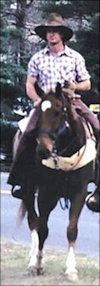

No one knew they were looking at a
hero and his two horses. Instead the local press derided him as "a lunatic
proposing to ride overland to New York."
The time was 1925. The place, Buenos Aires, Argentina.
Standing on the threshold of equestrian travel history was a young Swiss Long Rider named Aimé Tschiffely. Next to him were his two faithful Criollo horses, Mancha and Gato. Their collective goal was to ride more than ten thousand miles from Buenos Aires to New York. No one had ever attempted such a journey. Everyone thought Tschiffely was mad.
Looking back on what would become the most famous equestrian journey of the modern age, it is difficult to believe that anyone doubted the abilities of the legendary Long Rider and his hardy horses. Yet the school teacher who became an equestrian explorer had been told he was too inexperienced, his horses too old, and the journey too difficult.
What Aimé Tschiffely was told was wrong.
This is the story of the greatest equestrian epic of the twentieth century, a journey that came about because a man and his horses refused to quit - ever! During the course of their travels Tschiffely, Mancha and Gato crossed deadly deserts, passed through jungles, traversed sky-high mountain passes - and rode on. They were assailed by vampire bats, mistaken for gods and navigated the Panama Canal - but rode on.
Nothing stopped them. No one since has rivalled their accomplishments.
Tschiffely wrote a number of books about this adventure, and others, all of which can be found in the Tschiffely Collection. There were also many articles written about him.
Here is an interesting story about
Aimé's literary legacy and how it was handed down for seventy years.
For more information, please
visit his official website.

